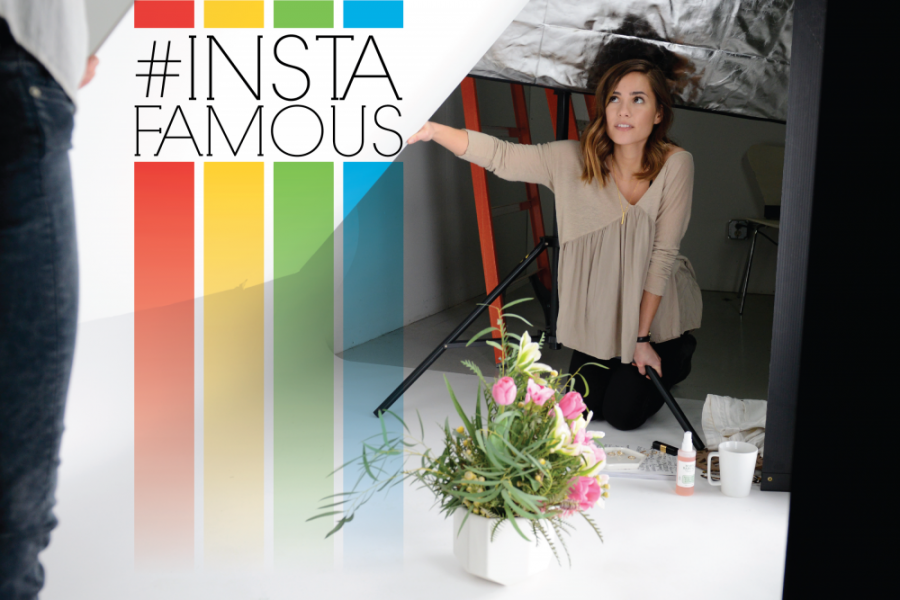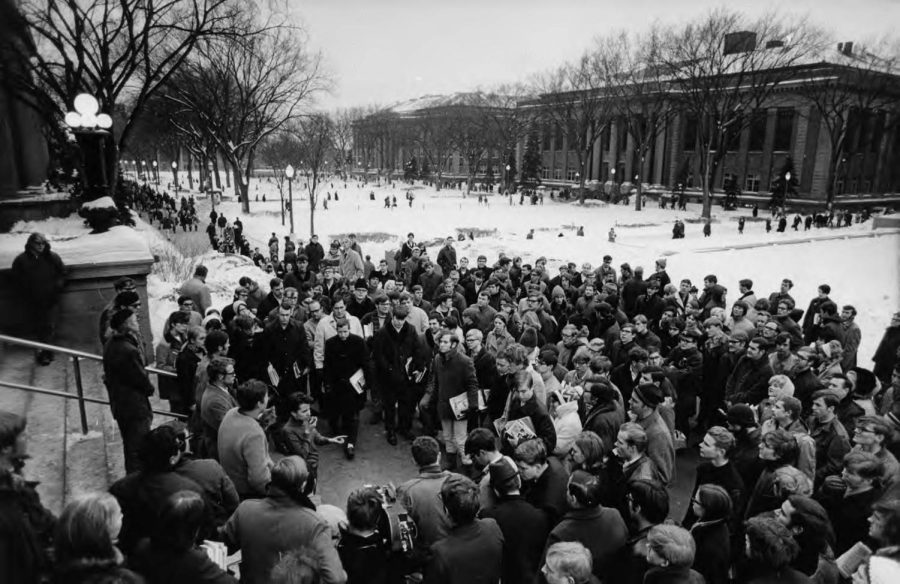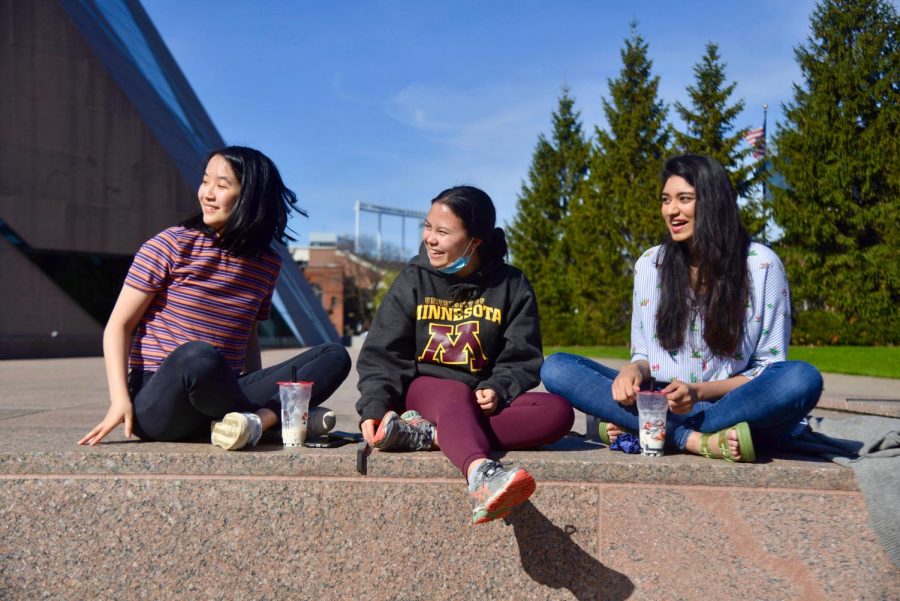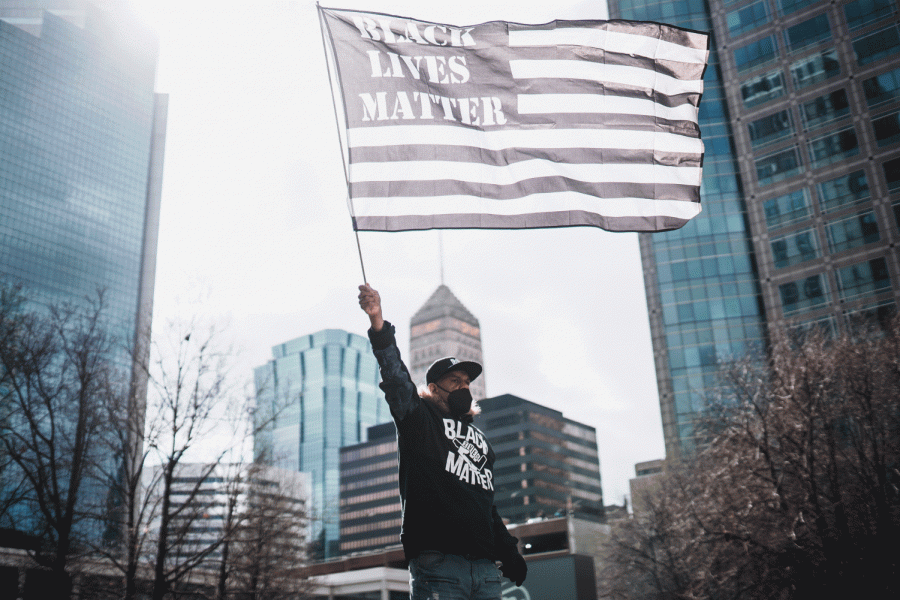Posing in a sun-lit, white brick studio space, Sami Huerta illustrated how to create a “geo-inspired silhouette” for a post on her blog. 
The University of Minnesota apparel design junior initially started the project as a way to meet new people after transferring to the school. But the hobby soon evolved into a part-time job.
The social media aficionado has more than 8,000 followers on Instagram. Brands across the country contact her to collaborate, which could mean modeling clothes or using their products in her photos and blog posts.
Huerta is one of dozens of bloggers in the Twin Cities looking to brand themselves online. Once they attain a distinctive persona and large following, they may garner sponsorships from brands.
With the expansion of social media, a growing number of brands are spending less on traditional advertising and more on other types of online advertising.
Word-of-mouth advertising, which draws companies like Duluth Pack to reach out to bloggers to promote their brand, is 10 times as effective as traditional advertising, University of Pennsylvania-Wharton professor Jonah Berger said.
“The beauty of working with bloggers and influencers is that it is real people enjoying and styling the products the way they want to,” said Andrea Sega, Duluth Pack’s public relations and social media analyst, in an email interview. “It’s also a fun opportunity to not only work together on shots, but grow a relationship, to [have] giveaway possibilities, and other ways of engaging the audiences.”
College students and older professionals alike look to become influencers — the industry term for a blogger with a perceived impact on potential consumers — for a variety of reasons, from earning an extra paycheck to expressing themselves in a creative way.

A labor of love
On top of their full-time student workloads, Huerta and University of Minnesota strategic communications junior Courtney Steeves work to maintain social media presences, a task they say that goes beyond clicking “post.”
Steeves’ blogging job lets her travel to places like Duluth, Minn., and Australia. But she said it’s not as glitzy as people may think.
“[For a shoot, I] change out in the open or in the car real quick [to] have a new outfit for a new day. So you’re fitting what would be a week’s worth of posts into one shoot,” Steeves said. “I don’t have time to go outside every single day. When I shoot, it’s a big shoot.”
Steeves then selects and edits photos and creates an accompanying blog post following the shoot. Next, she advertises the post on Instagram and other social media platforms, where she tags companies and provides click links for the items she’s seen using in the post.
Outside of the detailed process, bloggers sometimes struggle with other aspects of the job, said Tamara Waterston of the blog “Champagne and Macaroons.”
She said explaining the profession to other people, facing rejection from brands and reading negative comments online require a thick skin.
 “It looks easy, but it is a ton of work,” Waterston said. “It’s just me; there’s no one else to throw it on.”
“It looks easy, but it is a ton of work,” Waterston said. “It’s just me; there’s no one else to throw it on.”
Though a single Instagram post can be a time-consuming ordeal, many bloggers look to social media as an avenue for creative expression, justifying the hard work.
Smaller, local brands often allow more creative freedom than national companies do, which draws Steeves and Huerta to collaborate with them regardless of compensation.
“A lot of times I work with startup companies, I don’t want to ask for them to pay me. … It’s collaborating because [they] have cool ideas, and I have cool ideas. We’re going to create something from it,” Steeves said.
Huerta takes a similar approach.
“[I] have a lot of creative freedom, which is really cool. It’s a really fun time for me because [I] have a lot of freedom to do whatever I want,” Huerta said.
The inventive side of the job also appeals to Waterston, who started blogging full time after a handful of other creative careers, like event planning and running an online floral shop. She said she found success in previous jobs, but the stress became too much to handle.
“I wanted a creative outlet, and I didn’t know where I could find it without either killing myself with working 80 hours a week or working for someone else,” Waterston said. “I just wanted to be flexible.”
Making it in the major leagues
Beyond a creative outlet, social media marketing can be a way to earn some extra cash — though most bloggers aren’t making their entire living off Instagram.

Although roughly 66 percent of influencers make money from their blogs, only 4 percent of those bloggers report making more than $100,000 per year, according to a 2013 Digital Influence report. And more than 80 percent report making less than $10,000 per year.
“Although blogging may not be the most lucrative profession, the influential bloggers will continue to be successful and grow in influence,” said Soumya Sen, an assistant professor of information and decision sciences at the University of Minnesota.
Waterston, who says she doesn’t rely on blogging for her income, said she wasn’t sure of her goals with blogging until she visited New York Fashion Week with Chelsea Lankford, the lifestyle blogger behind Truelane.
“[After fashion week,] I was like, ‘I think I can actually do this for a living — I think I can make it work,’” Waterston said.
Another milestone for Waterston was being invited to join LIKEtoKNOW.it, an exclusive Instagram shopping tool that allows users to browse the items they see on their feeds.
“It’s a real neat way to meet brands,” Waterston said. “I feel like that’s kind of the ‘I made it’ moment. Like, I’m going to be a blogger now.”
Now with more than 18,000 followers, Waterston said different brands and companies from all over the world, such as Henri Bendel and Warby Parker, reach out to her to collaborate.
Brands look to influencers that are able to connect with a large audience with one shared photo, since word-of-mouth marketing generates more than twice the sales from paid advertising, Sen said.
“These ‘influential’ bloggers are those who have carved out a niche for themselves by becoming experts on a particular topic,” Sen said. “Marketers always want someone with such a large following to review and endorse their products because it not only gives the product a lot of visibility but also increases consumers’ trust in that product.”
In addition to networking with brands, bloggers also connect with each other. Full-time nurse Elena Kruse pursues her blogging gig outside of work hours and said the extra time is worth it because she gets to meet people in the Twin Cities blogging community.
“I’ve met so many people over the past couple of months. I’m in the season to meet everyone, which is great, and I love it. Everyone is so supportive,” Kruse said.
Kruse said Twin Cities bloggers get to know each other off the web, sometimes just grabbing coffee or collaborating on each other’s photo shoots. She said they also sometimes meet at events — some of which are hosted by bloggers at the request of a brand. Held in stores or even the blogger’s own backyard, attendees can network and buy products.
True self
While Huerta and Steeves agree that compensation is justified for projects that take more time and effort, they both said they prioritize staying true to their brand as bloggers — which some say extends to be a lifestyle.
Steeves said she sees her social media presence as more than an advertising gig. With about 13,000 followers, she’s self-aware of her power to influence young girls who may look up to her.
“I got approached by a lingerie line, and I said, ‘No.’ That’s not the image I want to put out to my followers,” Steeves said. “I think the most important thing is to put stuff out there that is true to [me] but also a positive image.”
If the blog post was sponsored in any way, Steeves includes “ad” and “sponsor” in the hashtags to let her followers know of the sponsorship.
Huerta feels similarly about accepting sponsorships and collaborating with brands that she can’t back.
“It’s really important to define where your lines are,” Huerta said. “A lot of times I get brands where I don’t like a single thing that they sell. They offer to pay me, and I can’t believe I just said no to money, but I’d rather say no to money.”
Waterston said her Instagram’s images are authentic to her own private life and said she uses the items she’s seen posing with on Instagram in real life.
“It is a lifestyle situation,” Waterston said. “I am 100 percent who I am on the blog and in real life. I couldn’t be anything other than that. But some people do that: They live a very different life than their blog life.”
In a recent Instagram post, Waterston glances over her shoulder while tugging on a strand of her blonde locks. In another, she wears a sundress and looks down on a dirt path, standing in front of a patch of yellow flowers. Hashtags included “happiness” and “flashesofdelight.”
Both garnered more than 300 likes and dozens of encouraging comments, like, “Wow this is incredible!”
“I think, like, [for] all Instagrammers, their actual Instagram feed is really nothing to who they really are,” Kruse said. “It expresses you — the good parts of you — and the stuff that you really like, but there’s always so much more, and it’s not always pretty and glamorous.”







